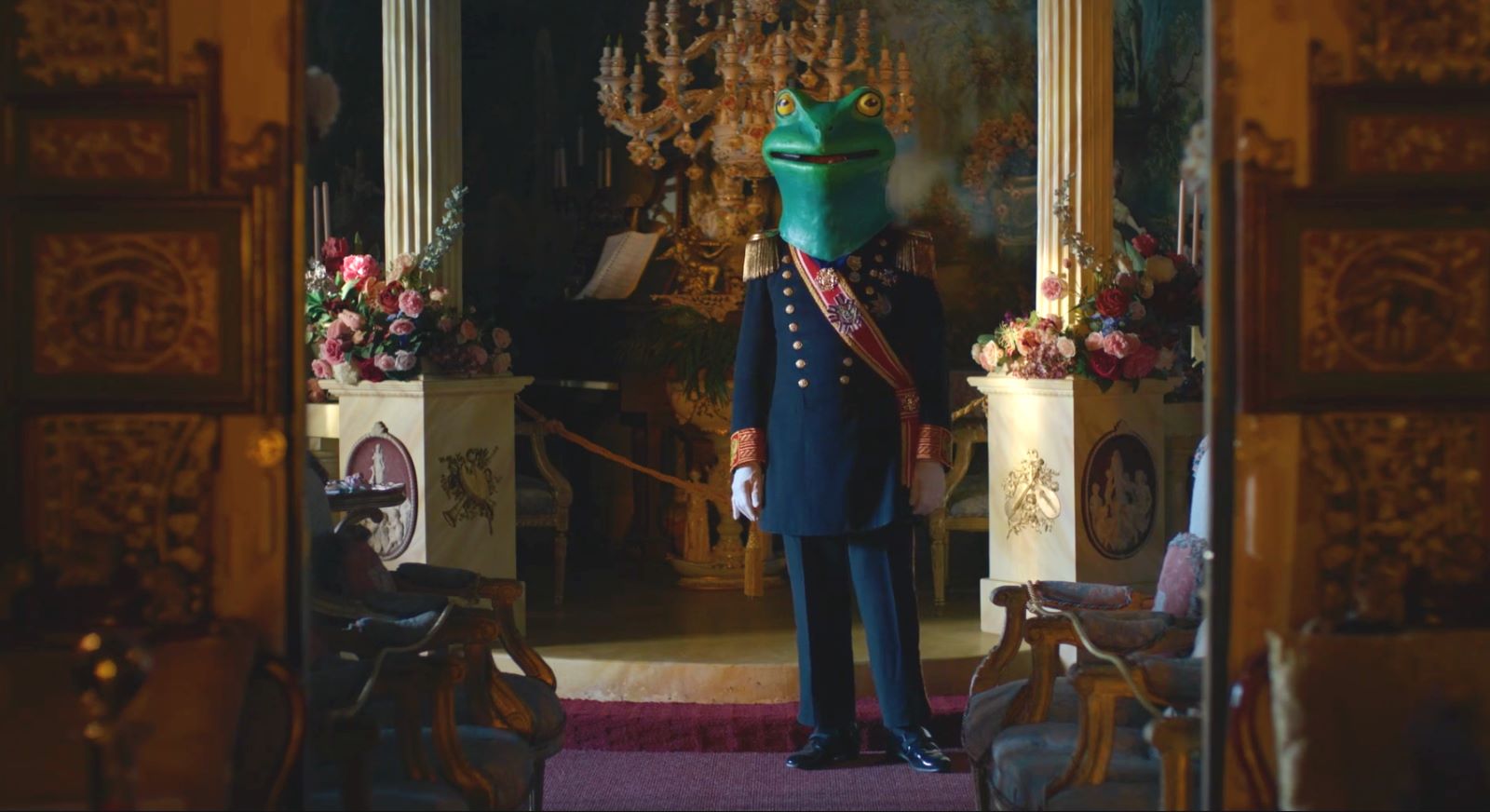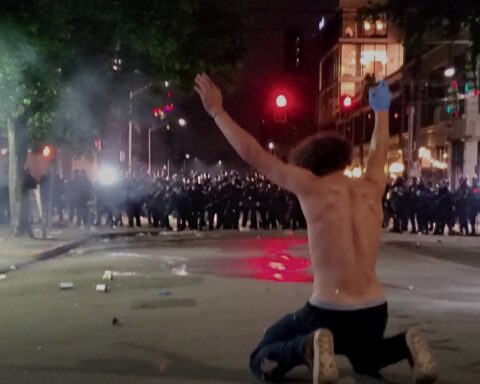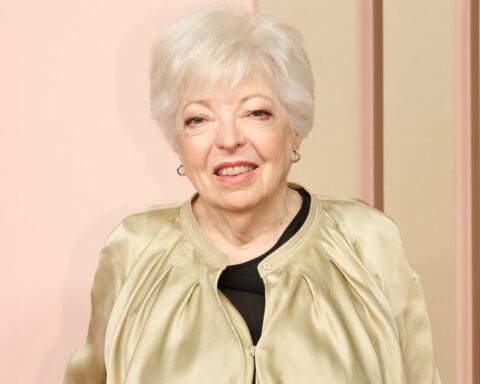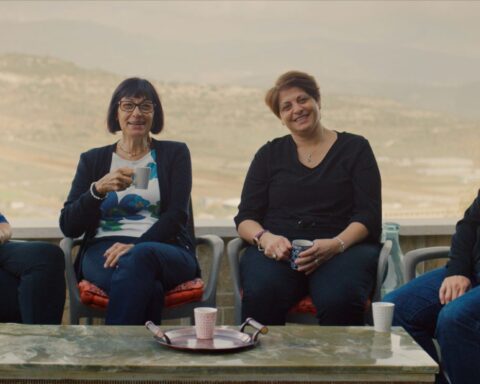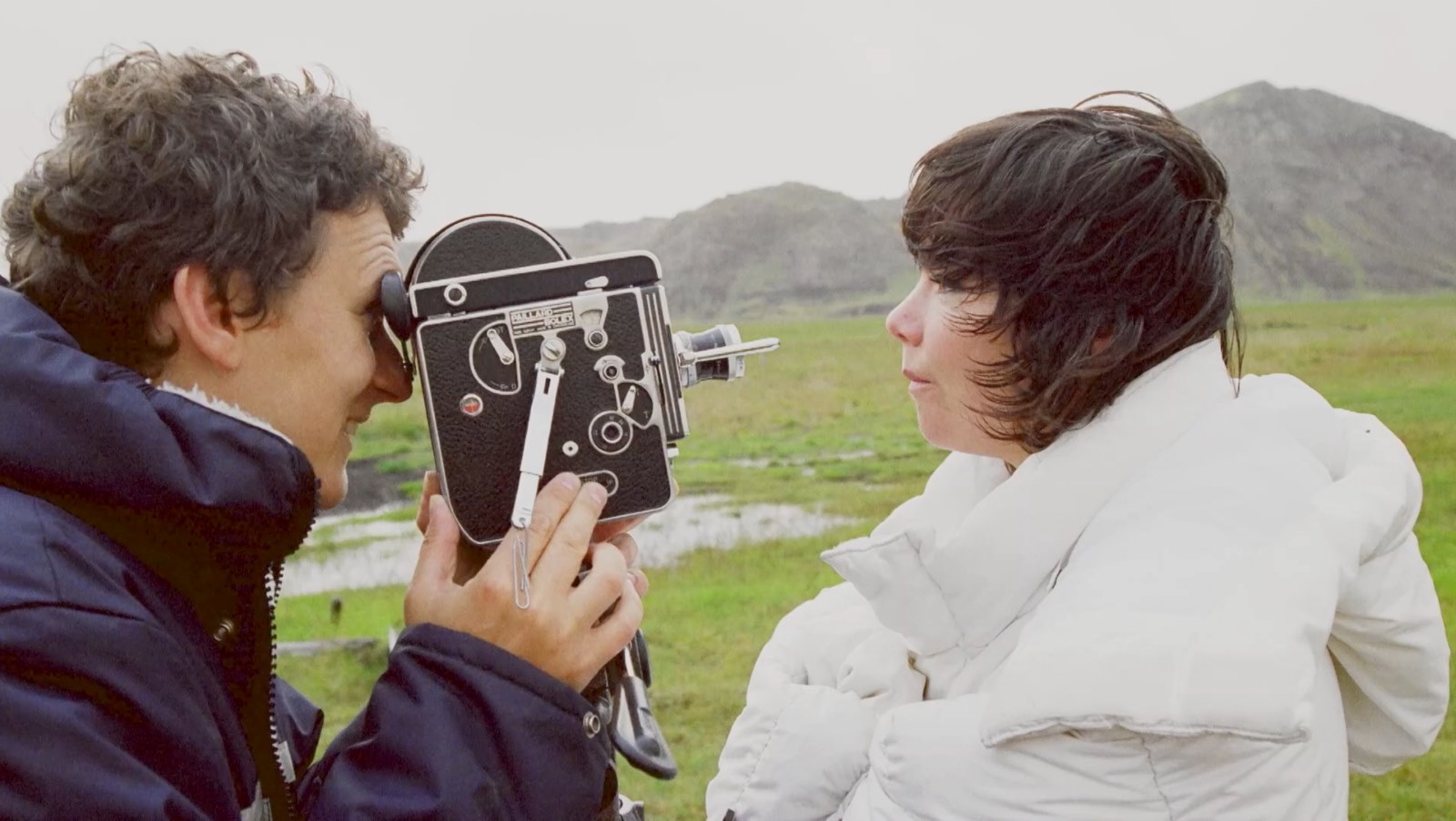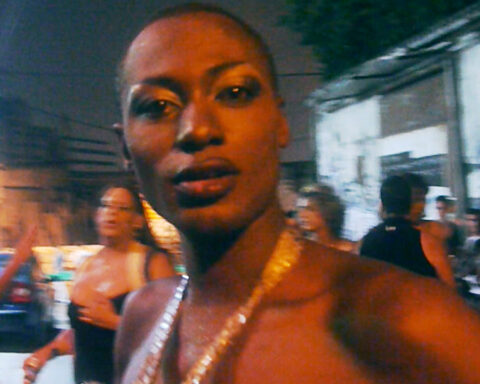“This is a career-changing film for me,” proclaims filmmaker Shannon Walsh while reflecting on her new documentary Adrianne & the Castle (2024). An award-winning filmmaker, author, and educator known for her films that cover a range of topics that span from climate change to the dangers of a gig economy, Walsh explores themes of love and grief in bold new ways with her latest work. After years of driving within the familiar guardrails that documentarians are often expected to follow, she is now veering down exciting roads that bring her closer to her true creative self. “I really think there is a before [the film] and an after,” she continues. “A lot of it is having met Alan and being in their world.”
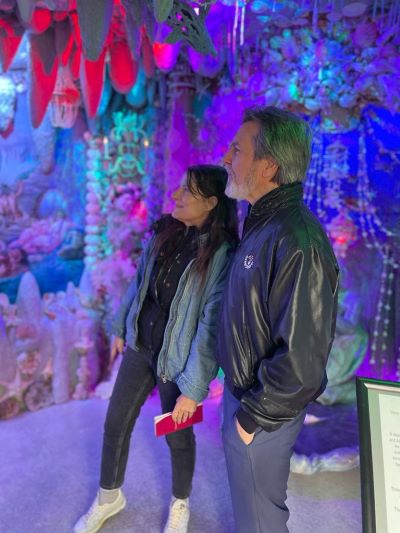
The “Alan” Walsh refers to is Alan St. George, the owner of Havencrest Castle in Savanna, Illinois. A talented artist, St. George has spent most of his life transforming the once humble abode he shared with his late wife Adrianne into an expansive 63-room living tribute to their 31-year relationship. Creating a colourful artistic bubble to encase themselves in, Havencrest became both a protective shield from the outside world and a limitless canvas for the couple’s creative expression. Everything from the murals on the ceilings to the sculptures in the doorways to the various themed rooms was done by St. George himself.
“The house is fascinating…it’s so hard to capture, even on film, what it feels like to be in those rooms,” notes Walsh. It was the beguiling allure of the home itself that first sparked the director’s interest in making the documentary.
Encouraged by her best friend and co-writer Laurel Sprengelmeyer to visit the castle, the director knew she had stumbled on a treasure chest that only a cinematic key could unlock. However, nailing down the story of the home took time to figure out. In seeking to unpack her questions about Havencrest, Walsh soon realized that it was in discovering more about the St. George couple that all the answers resided.
The origins of the St. Georges’ love story may read like a young adult novel, but conventional was not a label anyone would apply to their union. Smitten with Adrianne from the moment he first saw her while riding the bus as a 13-year-old, St. George knew that she was the one for him even though she did not reciprocate his feelings at first. Eventually marrying despite their family’s objections, the pair set out to live life on their own terms.

Fuelled by their commitment to each other and passion for the arts, the couple built a world where play and imagination knew no bounds. More than a mere muse for St. George to worship, Adrianne embraced the opportunity to reinvent herself into various personas. An actor, designer, and author, she played an instrumental role in shaping the look of their home and put on theatrical plays as fundraising events for community initiatives. Even after Adrianne’s tragic passing, her energy still flows through every aspect of Havencrest Castle and St. George’s art.
While St. George’s account makes their union seem as sweet and unbreakable as the toughest candy, Walsh could not help but be wary that something sour might be hiding underneath the wrapping. “This obsessive love story rang a lot of bells for me personally…why is he so obsessed with her and their love?” Walsh recalls of her initial suspicions. Getting to know St. George and connecting over their experiences with grief—Walsh lost her father during the pandemic—quelled these doubts.

“I learned a lot about grief from Alan,” admits Walsh. Comparing loss to a never-ending rollercoaster that can make people crazy, St. George helped the director realize that there should be no judgment when it comes to how someone processes loss. For St. George, this process takes the form of making it his life’s purpose to keep Adrianne’s memory and their love alive by sharing their story with others.
In stepping into the cave of grief, where pain can echo for a lifetime, Adrianne & the Castle captures the heart-wrenching sadness St. George has had to endure. Even in the most painful moments, Walsh’s empathic documentary still finds ways to remind viewers of the warmth and beauty of the couple’s love. “We want to have the joyful moments too, it’s not all about the tears,” states the director.
Part of the couple’s joy stemmed from the creative freedom that was frequently exercised at Havencrest. “There was something that felt really healing to me about entering their world…and liberating,” she states. The way the St. Georges freed themselves of the shackles of expectation that others tried to bind them with is an inspiring trait that Walsh took to heart when making the film.
Walking a similar path as documentaries such as Kaouther Ben Hania’s Four Daughters (2023) and Aisling Chin-Yee and Chase Joynt’s No Ordinary Man (2020), Adrianne & the Castle openly embraces the collaborative process of filmmaking. While Walsh has involved participants in her films in the past, having St. George onboard to the extent that she did was a new experience. “This was exceptional in that Alan is an artist and really had a vision himself, and also has great ideas,” Walsh notes. While she did not include him in the editing of the film, only showing him the completed version, she acknowledges that his mark is felt throughout.
The rich fruits that grew from their collaborative tree is evident onscreen. Walsh’s lens captures her behind-the-scenes interactions with St. George, St. George’s encounters with the actors playing the couple in the film, and the actors’ own views on Alan and Adrianne. All of this is wrapped in a kaleidoscope of artistic flourishes that incorporate everything from a mascot dance party to cherubs to various interpretations of Adrianne that go far beyond mere re-enactments.
Walsh is quick to note that she views the segments recreating the couples’ past as “memory prompts” rather than re-enactments. “I considered what we were doing as creating fantasy worlds which Alan could inhabit as a kind of alternative way of doing an interview.” The director continues: “They were less for the audience than they were for Alan to fully explore his experience with Adrianne.” In mining St. George’s memories, Walsh also had to figure out how to effectively bring Adrianne to life onscreen.
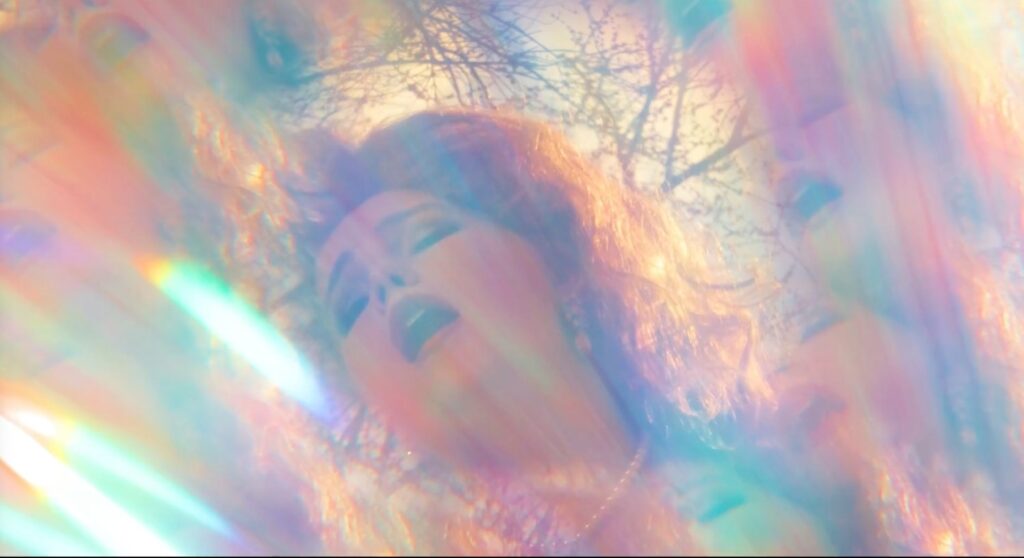
A dominating and inspiring presence, one who exuded creativity and confidence, Adrianne’s essence was crucial for the film. “Creatively we were always thinking, she is the personality that looms over everything,” states Walsh. Knowing that one interpretation would not suffice, the filmmaker utilized various techniques to reflect Adrianne’s luminous presence. She gave her shape and form through using multiple actors and working with in-camera lighting effects and filters, as well as incorporating specific colour choices.
This sense of sculpting Adrianne from various items in a creative toolbox extends to the portrayal of the castle as well. Not only does St. George walk around a grocery store wearing a miniature version of his house—an effective visual metaphor of the bubble the couple constructed for themselves that St. George refuses to burst—but the film’s score by Arcade Fire’s Richard Reed Parry further amplifies Adrianne’s voice. “We actually did live music on set,” Walsh states. “Richard was composing music and thinking about the house in terms of its sonic possibilities.” The director goes on to note that the house is not a museum, but rather a living home that was made with love. “I like the idea of Alan in a temple and not a tomb,” she adds.
Being within the temple full of love and artistic expression opened Walsh’s creative eyes in new ways. “Now I know that the biggest thing that holds us back is fear,” she states. While the director is a very big believer in the writing process for documentaries, making the film affirmed for her that you can be more playful with storytelling when you don’t keep to the beat. “We kept going, ‘How do we dream bigger?’” Walsh continues, “This kind of filmmaking felt really liberating in a way that I hope I carry with me through the rest of my work.”




